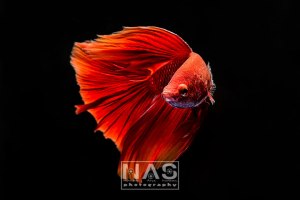Betta
| Betta | |
|---|---|
|
|
|
| Betta albimarginata | |
| Scientific classification | |
| Kingdom: | Animalia |
| Phylum: | Chordata |
| Class: | Actinopterygii |
| Order: | Perciformes |
| Family: | Osphronemidae |
| Subfamily: | Macropodusinae |
| Genus: | Betta Bleeker, 1850 |
| Type species | |
| Betta trifasciata Bleeker, 1850 |
|
| Synonyms | |
|
|
Betta /ˈbɛtə/ is a large genus of small, often colorful, freshwater ray-finned fishes in the gourami family (Osphronemidae).[1] By far the best known Betta species, however, is B. splendens, the Siamese fighting fish.
Characteristics
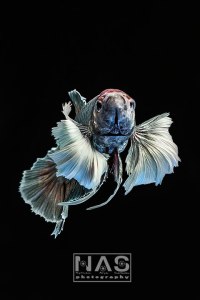
All the Betta species are small fishes, but they vary considerably in size, ranging from under 2.5 cm (1 in) total length in B. chanoides to 12.5 cm (5 in) in the Akar betta (B. akarensis).[1]
Bettas are anabantoids, which means they can breathe atmospheric air using a unique organ called thelabyrinth. This accounts for their ability to thrive in low-oxygen water conditions that would kill most other fish, such as rice paddies, slow-moving streams, drainage ditches, and large puddles.[2]
The various bettas can be divided into two groups, based on their spawning behaviour: some buildbubble nests, such as B. splendens, while others are mouthbrooders, such as B. picta. The mouthbrooding species are sometimes called “pseudo bettas”, and are sometimes speculated to haveevolved from the nest-builders in an adaptation to their fast-moving stream habitats.[3]
Name
Much confusion in terminology often occurs regarding these fish. Siamese fighting fish, B. splendens, are frequently sold in the United States simply as “bettas”. Fish fanciers are thus often unaware that, as of 2006, around 65 species are classified within the genusBetta. A further source of confusion is that while the generic name Betta is italicized and capitalized, when used as a common name it is usually neither italicized nor capitalized.[4] The common name of B. pugnax, for example, is thus Penang betta.
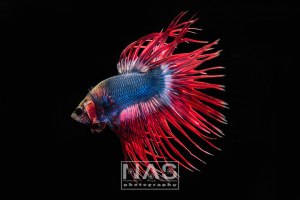
Siamese fighting fish, B. splendens, is often referred to as betta in the U.S., leading to some confusion
The name Betta (or betta) is pronounced /ˈbɛtə/;[4] the first part is the same as the English word bet. By confusion with the name of the Greek letter beta, the name is often pronounced /ˈbeɪtə/ in American English, and may be misspelled with one ‘t’. The name of the genus is unrelated to that of the Greek letter, being derived from the Malay word ikan betah (“persistent fish”).[5]
Diet
Wild Betta fish are hardy and can eat almost anything in their environments, including worms, larvae of mosquitoes or other insects, and even smaller fish. Their natural environment is often resource-limited, so many Betta species have little choice of food.
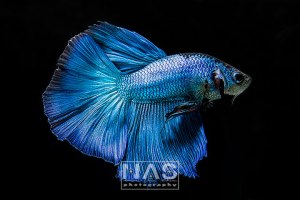
A red female B. splendens
Conservation
While many Betta species are common and B. splendens is ubiquitous in the aquarium trade, other bettas are threatened. The IUCN Red List classifies several Betta species as Vulnerable. In addition, B. livida is Endangered, and B. miniopinna, B. persephone, and B. spilotogena are Critically Endangered.[6]
The United Nations Environment Programme lists an unconfirmed species, Betta cf. tomi, as having become extinct in Singapore between 1970 and 1994.[7] This likely refers to the extirpated Singaporean population of B. tomi, which continues to exist in the wild in Indonesiaand Malaysia, as well as in captivity; the Red List classifies it as Vulnerable.[8][9]
Species
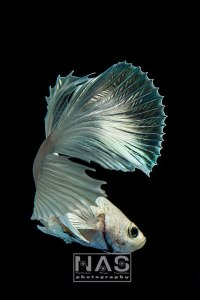
A female Betta splendens
There are currently 73 recognized species in this genus. The currently described Betta species can be grouped into complexes for conservation purposes. (This grouping of species makes no claim at representing a phylogenetic reality.) The complexes of the associated species are:[1] [10] [11]
- B. akarensis complex:
- Betta akarensis Regan, 1910 (Akar betta)
- Betta antoni H. H. Tan & P. K. L. Ng, 2006
- Betta aurigans H. H. Tan & K. K. P. Lim, 2004
- Betta balunga Herre, 1940
- Betta chini P. K. L. Ng, 1993
- Betta ibanorum H. H. Tan & P. K. L. Ng, 2004
- Betta obscura H. H. Tan & P. K. L. Ng, 2005
- Betta pinguis H. H. Tan & Kottelat, 1998
- B. albimarginata complex:
- Betta albimarginata Kottelat & P. K. L. Ng, 1994
- Betta channoides Kottelat & P. K. L. Ng, 1994
- B. anabatoides complex:
- Betta anabatoides Bleeker, 1851 (giant betta)
- Betta midas H. H. Tan, 2009
- B. bellica complex:
- Betta bellica Sauvage, 1884 (slim betta)
- Betta simorum H. H. Tan & P. K. L. Ng, 1996
- B. coccina complex:
- Betta brownorum K. E. Witte & J. Schmidt, 1992
- Betta burdigala Kottelat & P. K. L. Ng, 1994
- Betta coccina Vierke, 1979
- Betta hendra I. Schindler & Linke, 2013
- Betta livida P. K. L. Ng & Kottelat, 1992
- Betta miniopinna H. H. Tan & S. H. Tan, 1994
- Betta persephone Schaller, 1986
- Betta rutilans K. E. Witte & Kottelat, 1991
- Betta tussyae Schaller, 1985
- Betta uberis H. H. Tan & P. K. L. Ng, 2006
- B. dimidiata complex:
- Betta dimidiata T. R. Roberts, 1989
- Betta krataios H. H. Tan & P. K. L. Ng, 2006
- B. edithae complex:
- Betta edithae Vierke, 1984
- B. foerschi complex:
- Betta dennisyongi H. H. Tan, 2013
- Betta foerschi Vierke, 1979
- Betta mandor H. H. Tan & P. K. L. Ng, 2006
- Betta rubra Perugia, 1893 (Toba betta)
- Betta strohi Schaller & Kottelat, 1989
- B. picta complex:
- Betta falx H. H. Tan & Kottelat, 1998
- Betta picta (Valenciennes, 1846) (spotted betta)
- Betta simplex Kottelat, 1994
- Betta taeniata Regan, 1910 (Borneo betta)
- B. pugnax complex:
- Betta apollon I. Schindler & J. Schmidt, 2006
- Betta breviobesus H. H. Tan & Kottelat, 1998
- Betta cracens H. H. Tan & P. K. L. Ng, 2005
- Betta enisae Kottelat, 1995
- Betta ferox I. Schindler & J. Schmidt, 2006
- Betta fusca Regan, 1910 (dusky betta)
- Betta kuehnei I. Schindler & J. Schmidt, 2008
- Betta lehi H. H. Tan & P. K. L. Ng, 2005
- Betta pallida I. Schindler & J. Schmidt, 2004
- Betta prima Kottelat, 1994
- Betta pugnax (Cantor, 1849) (Penang betta)
- Betta pulchra H. H. Tan & S. H. Tan, 1996
- Betta raja H. H. Tan & P. K. L. Ng, 2005
- Betta schalleri Kottelat & P. K. L. Ng, 1994
- Betta stigmosa H. H. Tan & P. K. L. Ng, 2005
- B. splendens complex:
- Betta imbellis Ladiges, 1975 (crescent betta)
- Betta mahachaiensis Kowasupat, Panijpan, Ruenwongsa & Sriwattanarothai, 2012
- Betta siamorientalis Kowasupat, Panijpan, Ruenwongsa & Jeenthong, 2012
- Betta smaragdina Ladiges, 1972 (Blue betta)
- Betta splendens Regan, 1910 (Siamese fighting fish)
- Betta stiktos H. H. Tan & P. K. L. Ng, 2005
- B. unimaculata complex:
- Betta compuncta H. H. Tan & P. K. L. Ng, 2006
- Betta gladiator H. H. Tan & P. K. L. Ng, 2005
- Betta ideii H. H. Tan & P. K. L. Ng, 2006
- Betta macrostoma Regan, 1910 (spotfin betta)
- Betta ocellata de Beaufort, 1933
- Betta pallifina H. H. Tan & P. K. L. Ng, 2005
- Betta patoti M. C. W. Weber & de Beaufort, 1922
- Betta unimaculata (Popta, 1905) (Howong betta)
- B. waseri complex:
- Betta chloropharynx Kottelat & P. K. L. Ng, 1994
- Betta hipposideros P. K. L. Ng & Kottelat, 1994
- Betta pardalotos H. H. Tan, 2009[12]
- Betta pi H. H. Tan, 1998
- Betta renata H. H. Tan, 1998
- Betta spilotogena P. K. L. Ng & Kottelat, 1994
- Betta tomi P. K. L. Ng & Kottelat, 1994
- Betta waseri Krummenacher, 1986
